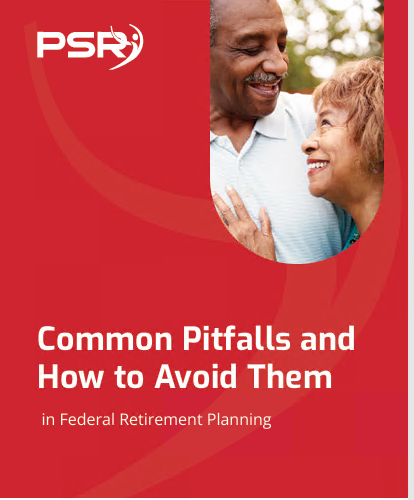Key Takeaways
-
Recent legislative changes in 2025 have removed the Windfall Elimination Provision (WEP) penalty for CSRS retirees, prompting many to reevaluate their withdrawal strategies.
-
Timing your CSRS annuity, TSP withdrawals, and potential Social Security claims now requires a fresh approach to avoid over-taxation or inefficient income sequencing.
What Changed in 2025 That Affects Your CSRS Withdrawal Plan
- Also Read: FAA, Law Enforcement, and Special Federal Employee Categories—Here’s What Makes Their Retirement Unique
- Also Read: Blending Private and Public Sector Retirement Plans Is Complicated—Here’s Where Couples Get It Wrong
- Also Read: The Silent Shift in Postal Service Retirement Benefits That Could Change Everything by 2026
Let’s explore why you may need to rethink your approach.
The WEP Repeal: A Turning Point for CSRS Retirees
For decades, CSRS retirees who also qualified for Social Security benefits saw those benefits reduced under the Windfall Elimination Provision. But as of January 2025, that penalty is gone.
Why It Matters
-
If you paid into Social Security through private-sector work or side jobs, you’re now eligible for your full benefit without a WEP offset.
-
This opens up new options for income sequencing—especially if you were delaying Social Security to avoid the WEP penalty.
-
Coordinating Social Security with CSRS and TSP withdrawals now gives you more flexibility.
TSP Withdrawal Planning Is Now More Nuanced
Your Thrift Savings Plan (TSP) is one of three key income sources under CSRS (alongside your annuity and Social Security, if applicable). But if you haven’t updated your withdrawal plan since the WEP repeal, it’s time to reconsider.
Tax Implications Are Bigger Than Ever
-
Withdrawals from your traditional TSP are fully taxable.
-
If you now plan to take Social Security earlier, your combined income may push you into a higher tax bracket.
-
CSRS annuities themselves are also taxable, further complicating the picture.
In 2025, the IRS counts up to 85% of your Social Security as taxable if your combined income exceeds $34,000 (individual) or $44,000 (married filing jointly). That means stacking TSP and annuity withdrawals with new, un-reduced Social Security benefits could result in unintended tax burdens.
A New Sequence May Work Better
-
Start Social Security at full retirement age (67 for those born in 1958) and delay tapping your TSP until age 70—71—72 when Required Minimum Distributions (RMDs) begin.
-
Or do the opposite: draw down your TSP in your 60s while deferring Social Security to age 70 to receive the maximum benefit.
-
Either way, it may be wise to lower your tax exposure by spreading out withdrawals or considering Roth conversions before RMDs kick in.
Don’t Ignore the 2025 RMD Changes
Required Minimum Distributions for TSP accounts begin at age 73 if you turned 72 after January 1, 2023—which applies to many current CSRS retirees.
In 2025:
-
Failing to take your RMD triggers a 25% excise tax on the undistributed amount (or 10% if corrected timely).
-
RMD amounts are based on your account balance as of December 31 of the prior year.
This rule alone is causing some retirees to pull forward their withdrawals to smooth out taxable income before the IRS steps in.
Inflation and COLAs Continue to Shape CSRS Payouts
The CSRS annuity is adjusted by full COLAs each year, unlike the FERS annuity which is capped under certain conditions. In 2025, the COLA was 3.2%, helping retirees keep pace with rising costs. However, inflation is also pushing some retirees into higher tax brackets or increasing Medicare Part B premiums due to IRMAA (Income-Related Monthly Adjustment Amounts).
This dynamic makes it more important than ever to:
-
Monitor your taxable income, especially if you’re close to an IRMAA threshold
-
Consider whether earlier or smaller TSP withdrawals can help keep your income lower over time
Evaluating Spousal and Survivor Options
If you’re married or have designated a survivor, your CSRS withdrawal strategy affects more than just you. The value of your annuity reduction for survivor benefits, your TSP beneficiary designations, and even your Social Security strategy should be aligned.
What to Consider in 2025
-
Survivor elections under CSRS must be finalized at retirement and are irrevocable
-
Failing to elect a survivor annuity can disqualify your spouse from continuing FEHB health coverage
-
TSP beneficiary withdrawals are subject to different rules and tax treatments than withdrawals you make for yourself
In the wake of recent legal and tax changes, many couples are revisiting their assumptions and rebalancing income sources for long-term protection.
Tax Brackets and Policy Changes Add Uncertainty
While the WEP repeal is good news, other proposed laws are less favorable:
-
A pending bill aims to exclude locality pay from the CSRS high-3 calculation, potentially reducing annuity amounts for future retirees
-
Discussions continue about reducing the government’s contribution to FEHB premiums
If either policy passes, your future withdrawal plan may need a defensive posture to hedge against reduced income or higher out-of-pocket healthcare costs.
In 2025’s environment, tax diversification across CSRS, TSP, and Social Security has become critical. You should assess:
-
How much income to withdraw from taxable vs. tax-deferred accounts
-
Whether to convert any portion of your TSP to Roth before RMDs
-
How your income distribution plan aligns with your tax bracket and Medicare thresholds
Your CSRS Annuity Isn’t Going Away, But It’s No Longer the Whole Picture
The CSRS annuity remains one of the most stable retirement benefits available to public sector workers. But depending solely on it may no longer make sense.
With Social Security now fully available to you without penalty and TSP offering customizable withdrawal options, the best approach is one that blends all income streams strategically.
A Few Strategic Questions to Ask Yourself
-
Have I projected how my income will shift each year between age 62 and 75?
-
Am I underusing the window before RMDs to optimize taxes?
-
Will my spouse or survivor be financially secure based on my current election choices?
-
Should I update my TSP allocation based on new withdrawal timing?
Answering these questions could mean the difference between a good retirement and a great one.
Making Smarter Withdrawal Decisions Starts Now
You may have spent decades working under CSRS, with a strong pension as your foundation. But 2025’s changes mean your withdrawal plan now needs a second look.
Instead of relying on outdated strategies, now is the time to:
-
Adjust your withdrawal timing to reflect the WEP repeal
-
Recalculate the tax impact of combined income sources
-
Reassess survivor protections and long-term healthcare funding
-
Factor in RMDs, Medicare thresholds, and future policy risks
Every choice you make today helps shape your financial security for the next 30 years.
Fine-Tune Your Plan with Help
Your CSRS annuity hasn’t changed—but the retirement landscape around it has. The smartest retirees in 2025 are adapting now. That includes speaking with a professional who understands the public sector retirement system, recent law changes, and your personal goals.
Get in touch with a licensed professional listed on this website to make sure your withdrawal strategy is still working for you. What worked last year may not be the best choice this year.













